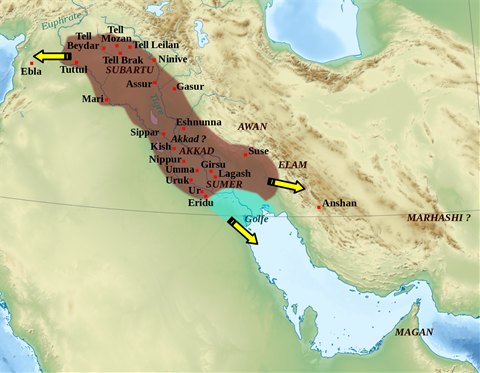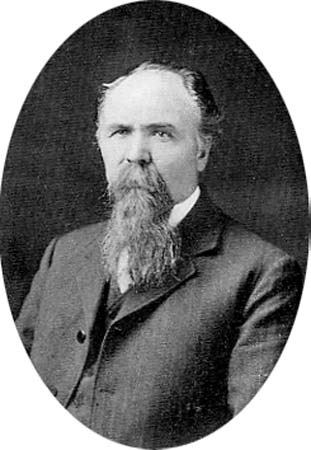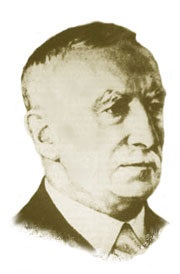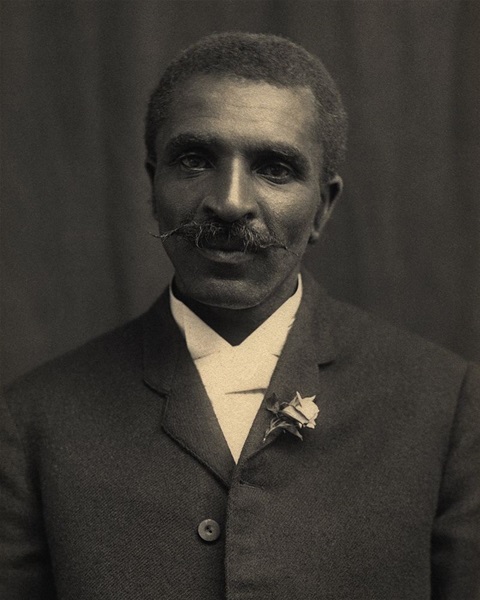Introduction
As might be expected there is little information on the origins of composting. The earliest records and archaeological evidence relate to the use of manure produced from animals as a by-product of keeping livestock. There was a need to both dispose of the muck and fertilise the land. The disposal of animal, and human, manure continued to be the major source of soil enrichment materials until the introduction of modern sewage systems separated them from the lives of the non-farming population. This produced the need for gardeners to either purchase animal manure for use on the garden or to deliberately compost garden and kitchen waste to produce our own compost or a combination of both.
Amongst this group of the population composting was a means to produce an end product that would enrich the soil while also providing a means of disposing of waste before there garden waste collections where undertaken by local councils. One of the earliest advocates of modern composting was Sir Albert Howard who developed the Indore method of composting during his time in India before the first world war.
Later with the rise of environmental concerns and the need to reduce waste sent to landfill a new group of the population where encouraged to compost. This new group of composters, with their plastic bins, often purchased at a discount from their local Council, needed information and support not just on composting methods but on the use of compost.
The information in this section comes from several sources but principally from the Complete Book of Composting by J I Rodale and the staff of Organic Gardening and Farming Magazine
Akkadian Empire
By Middle_East_topographic_map-blank.svg: Sémhur (talk)derivative work: Zunkir (talk) - Middle_East_topographic_map-blank.svg, CC BY-SA 3.0, https://commons.wikimedia.org/w/index.php?curid=11966732
About 10,000 years ago, the people who settled in the area between the Tigris and Euphrates Rivers changed from being hunter gathers to a more pastoral lifestyle growing their food and tending to their animals. At some stage they must have noticed that their plants grew better where there was manure and started deliberately putting manure on their soil where they planned to cultivate crops.
The first "written" account of compost making is on a set of clay tablets carved during the reign of King Sargon during the Akkadian Dynasty, which lasted about 160 years between 2320 BC and 2120 BC. Akkade was located in of Mesopotamia, which is now Iraq a country that if mentioned does not immediately bring composting to mind. However while the Akkadian Empire eventually perished of composting survived.
Stone Age Composting in Scotland?
If you undertake an internet search on the history of composting it is likely that the main references will be to the above and the use of manure in ancient Asia and I should really start there as well but I cannot resist mentioning that there is evidence for small-scale cultivation in the Neolithic, Bronze Age and Iron Age in Scotland[1] (E.B.A. Guttman World Archaeology: Midden Cultivation in Prehistoric Britain -- Arable Crops in Gardens) where midden heaps were sometimes ploughed in situ. This means that, rather than spreading midden material onto the fields, the early farmers simply ran an ard over their “compost” heaps before sowing their plots. The soil examined contained evidence of manure, vegetable waste, ash and other organic matter. While this may have been a deliberate attempt to spread nutrients it was probally just an attempt to level the cultivated area and get rid of the muck.
[1] E.B.A. Guttman World Archaeology: Midden Cultivation in Prehistoric Britain -- Arable Crops in Gardens
2 (Professor Jules Janick Purdue University: Lectures 12-13 History of Agricultural and Horticultural Technology in Asia )..
Agriculture in Ancient Asia
Tools excavated at Neolithic sites in northern China included a similar kind of ard to that used by farmers on the Scottish middens. In his first century B.C. agricultural writings, Fan Sheng-Chih Shu indicated that the ancient Chinese enriched soil with cooked bones, manure and silkworm debris[i]. (Professor Jules Janick Purdue University: Lectures 12-13 History of Agricultural and Horticultural Technology in Asia ).
There are references to composting manure and straw in Ancient Chinese writings and Bagavad Vita, an early Hindu text.
Greeks, Egyptians and Romans
The Greeks, Egyptians and Romans all practiced compost making taking straw from animal stalls and burying it in cultivated fields. There are references to composting manure and straw in the Talmud and Old Testament,
The Bible contains numerous references to dung and dunghills. In the country manure was spread onto fields, in cities and towns it was collected with street sweepings , which no doubt contained a fair proportion of faecal material, and stored in a dunghill outside the city wall. Manure contaminated straw was also soaked in water to make a liquid manure a practice not unknown today.
The Hebrew Talmud records that ashes, straw, stubble, chaff, grass where used to enrich the soil and that blood from animal sacrifices was collected as a fertiliser
In addition to manure ashes, brambles, chaff, grass, stubble, straw are recorded in the Talmud as being used. Blood from sacrifices was collected and sold to gardeners
The Romans
Marcus Porcius Cato, 234 -149 BC a retired Roman general described composting in his book titled “De Agri Cultura” (Concerning the Culture of the Fields). This included composting animal manures, including goat, sheep, cattle and other dung as well as plant wastes including straw, lupines, chaff, bean stalks, husks, and ilex and oak leaves. Dung was used in 3 ways:
- Direct spreading
- Mixed with street sweepings and organic refuse on the dunghill outside the city wall
- Trampled straw soaked was soaked in dung-water (liquid manure)
His system would also appear to be the first recorded use of composting using worms (vermicomposting)
Cleopatra,
As mentioned above the Egyptians were early composters but they went even further. Cleopatra, in 50 BC, is reported to have made worms sacred after observing their composting abilities. She also enacted laws to make removal of earthworms from Egypt a crime punishable by death. While many of us will be in favour of composting and protecting the environment it may be felt that such a policy may not be total acceptable in the UK today.
10 or 12 century
Idn al Awan writing in a Book on Agriculture (Kitab al Falahah) gives information on composting and the use of manures.
In the UK the monasteries played a role promoting good agriculture practice and in subsequent years as more documents survived so the references to the use of manure and composting increased.
North America
Native Americans
The Native Americans were also active composters and used three methods of composting.
Sheet Composting where compostable materials where spread over the soil with more soil being added in a layerto cover the waste. This technique is still used today.
Composting while planting. Uneaten fish parts or other animal parts were planted with seeds as a nutrient source.
Seed balls. Seeds were balled in clay and compostable materials. The seed balls were then thrown to plant the seeds. The seeds were protected by the clay balls which kept them moist, while the compost provided nutrients as the germinated and grew.. A similar technique was used in ancient Egypt and China.
American settlers
Fish had been buried by Native Americans as a means of enriching the soil and New England farmers developed this by making compost using a recipe of 10 parts muck to 1 part fish, turning the compost heaps until the fish disintegrated. This could be used on a large scale one Connecticut farm, Stephen Hoyt and Sons used 220,000 fish in one season of compost production. There might have been a slight smell of rotting fish.
However in most areas stable manure was more readily available than fish and Rodale records that early colonial farmers adopted a system using two loads of muck (rich soil) and one of barnyard manure. In the southern states cotton-seed was composted with the muck.
F H King
Professor F.H. King of the U.S. Department of Agriculture toured China, Japan and Korea in the early nineteen-hundreds and published his findings in Farmers of Forty Centuries in which he described the use of manure (both animal and human), canal mud, green manure and composts to maintain soil fertility.
In China canal mud was applied directly to the fields or used in alternating layers with equine waste in pits along the canal banks during the winter months to compost, Cut clover was also composted saturated with canal mud
Sir Albert Howard took Kings writings into account when developing the Indore composting method (see below)
An eBook created by Steve Solomon (www.soilandhealth.org) and Charles Aldarondo (pg@aldarondo.net). FARMERS OF FORTY CENTURIES OR PERMANENT AGRICULTURE IN CHINA, KOREA AND JAPAN By F. H. KING, D. Sc. 1911 is available at
http://www.public-library.uk/ebooks/37/46.pdf
“Scientific” method of farming
In the early 20th century the use of compost declined as it was replaced by artificial fertilizers. The practice of using chemical fertilizers instead of compost began following work in 1840 by a German scientist, Justus von Liebig, who proved that plants obtained nourishment from chemicals in solution. This led to the belief that all that was necessary to aid plant growth was the addition of chemical solutions. Liebig dismissed the significance of humus because it was insoluble in water.
Before publication in 1840 of his Organic Chemistry its Application to agriculture and Physiology it was allegedly commonly thought that plants actually obtained their nutrients
by directly from humus. Liebig disproved this theory by the demonstrating that plants could absorb nutrients from chemicals placed in solution.
This led to the belief that all that was necessary to aid plant growth was the addition
of chemical solutions. Since humus was not water soluble it fell out of favour.
Combinations of manure and dead fish did not look very sexy beside a bag of modern fertilizer and so in many areas of the civilised world, by the early 20th century, the use of compost had declined as it was replaced by “modern” artificial fertilizers.
Modern Composting
Sir Albert Howard & the Indore method
Not everyone felt that artificial fertilisers were the answer. Sir Albert Howard, based in India from 1905, spent almost 30 years experimenting with organic gardening and farming. His book, An Agriculture Testament, published in 1943 resulted in a renewal of interest in organic methods of agriculture.
He developed a pit composting system as early as 1931 published in a short publication called The Waste Products of Agriculture -- Their Utilization as Humus written by Albert Howard and Yeshwant D. Wadi. Their "compost factory" consisted of thirty-three large pits, each 30 ft. by 14 ft. and 2 ft. deep with sloping sides, arranged in three rows with aufficient space between the lines of pits for the easy passage of loaded carts. "
The pits are filled to the top with a careful combination of farm waste vegetation, manure and dried and ground oxen urine soaked soil from the stables mixed with water and sprinkled onto the material in the pile. About 14-16 days material was aerated by turning and then turned again at a month. After two months it was moved out of the pit and piled in a rectangular heap. At three months the material was ready to be applied to the fields.
In his later work which resulted in the Indore Method he found that the best compost consisted of 3 parts plant matter to 1 part manure. These were initially layered in sandwich fashion with the layers being repeated until the heap was about 1.5 meters tall. The green layer was about 15cm thick followed by 5cm layer of manure and then one of soil, ground limestone and rock phosphte. These layers were repeated until the desired height was reached. The heap was kept moist and turned during decomposition providing aerobic conditions. The resulting compost was ready in about three months.
J I Rodale
I.E. Rodale continued Howard’s work and introduced American gardeners to the value of composting for improving soil quality. He established a farming research centre in Pennsylvania and the monthly Organic Gardening magazine.
There are a number of modern versions of the Indore method. In one such system a compost bin is filled with separate six-inch layers of greens, manure and soil until the bin is filled This layering system is repeated until the bin is full. In large gardens it is recommended that the materials should reach a height of about 1.5 metres (5 feet) but the techniques will work in a lower pallet bin. The green layers consist of any available plant material e.g. vegetable leave or grass clippings. The manure, in the UK, usually consist of matured cow manure, the third soil layer consist of thin layer of topsoil or compost. The pile can be watered as each layer is added or soaked when completed. This is an aerobic composting method requiring turning at least twice.
Lawrence D. Hills
Whilst researching a book called Russian Comfrey Lawrence D. Hills was so intrigued by its possibilities that he devoted much of the rest of his life to popularising it.
Hills founded the Henry Doubleday Research Association (HDRA) in 1954 naming the organisation after Henry Doubleday introduced comfrey to the UK in the nineteenth century.
Garden Organic, the name under which HDRA now trades operates the Master Composter scheme which encourages and trains volunteers, in cooperation with local councils, to promote composting. www. homecomposting.org.uk.
Please check out the website and consider becoming a Master Composter to continue writing composting history.




Stephen Escreet
Just prior to reading all of the above most interesting and informative writing I had, whilst planting seeds in trays ran out of bagged compost. So what was used before bagged compost?
Rachel Schneider
Rudolf Steiner developed the idea of both plant based compost, and animal manure compost plus the addition of special compost preparations for enlivened soils to produce vital and healthy food In 1924
Nonoy
If I vermicompost cat poop and litter, then apply the vermicompost to an ornamental like cats whiskers, will vermicomposting the leaves and stems of this ornamental be pathogen risk free?
Rodney Weston
Please check out my item on dog poo. It is not normally recommended to vermicompost cat poo due to the risk of toxoplasma
lowkey david
why was the method developed
Rod
In which method are you interested?
Direct Compost
Great post.Thanks for informative article.
Lisa
Hi, I'm a university student and would like to cite this webpage in my dissertation , but cannot find any names any where to reference the author of the page ?